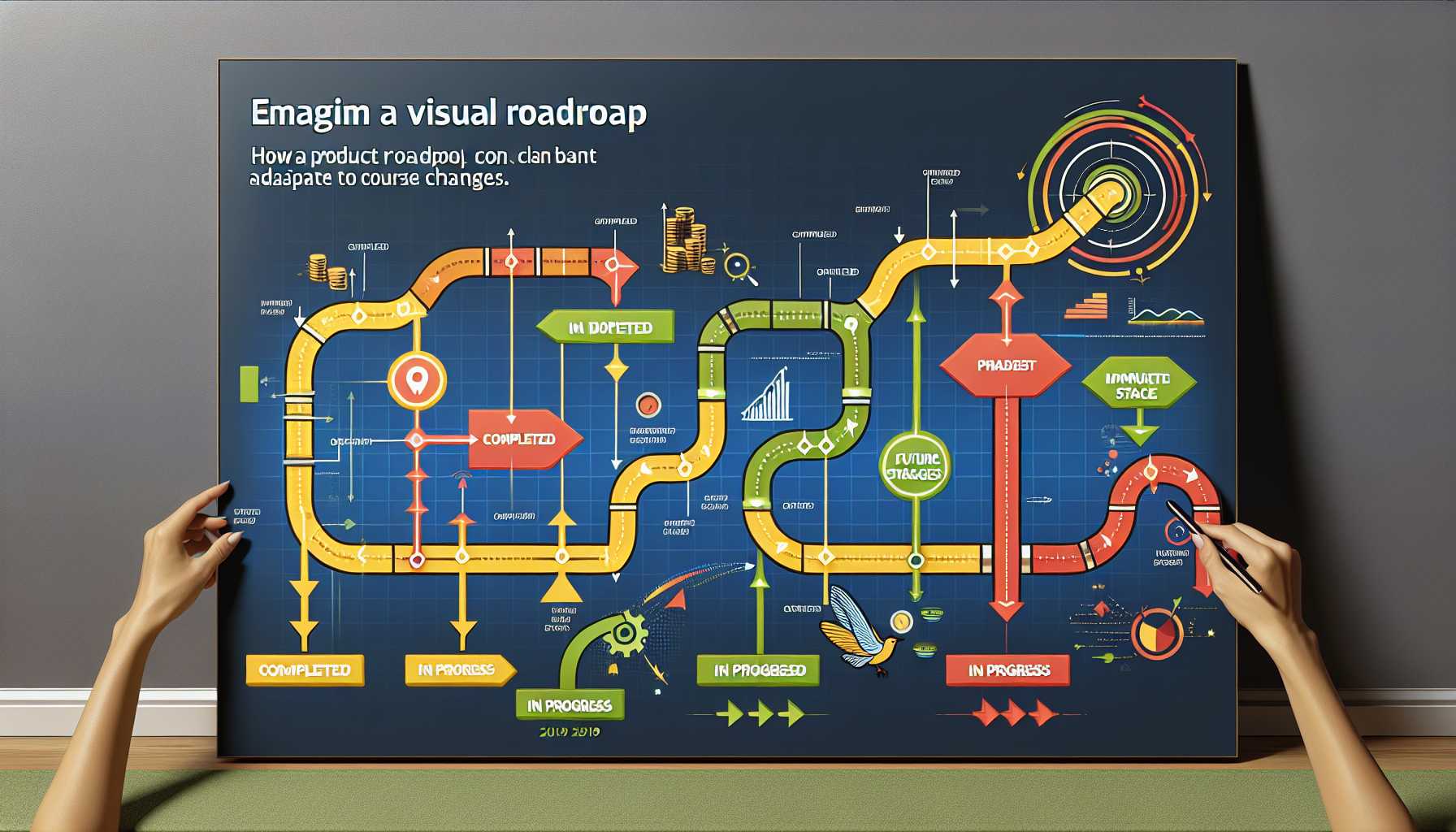Welcome back, experienced tech product managers. In our ever-changing industry, managing product roadmaps is akin to navigating treacherous waters. Agility, foresight, and a strategic compass are essential in ensuring a sustainable product trajectory. In today’s discussion, we draw from a wealth of personal experience and best practices to unravel the secrets of keeping a product roadmap resilient yet flexible in the face of market flux.
The Core Principles of Agile Roadmapping
Before we delve into specifics, let’s revisit the core principles of agile roadmapping. An agile roadmap is a living document, a blend of vision and adaptability. It is both a guidepost for the internal teams and a promise of value to customers and stakeholders. To sustain this duality, a deep integration with market feedback mechanisms and internal innovation pipelines is key.
Drafting the Agile Roadmap
While drafting roadmaps, I discovered a variety of approaches; however, the most effective ones always included these elements:
- Vision Alignment: Begin with an end in mind by ensuring the roadmap is aligned with the overarching product vision and business strategies. A vision canvas or a lean canvas can be a handy tool to reference.
- User-Centricity: Incorporate user feedback, usage data, and persona research heavily into the decision-making process to ensure product features solve real problems.
- Flexibility: Allow for shifts and pivots. The roadmap must be structured enough to guide but flexible enough to adapt to unforeseen changes, whether they arise from market trends, customer feedback, or internal innovation.
- Stakeholder Collaboration: Engage with stakeholders throughout the roadmap lifecycle. Regular touchpoints, transparency, and collaborative tools like Aha! or ProductBoard facilitate shared understanding and support.
- Communication: Clearly communicate the “why” behind roadmap changes. This supports buy-in from teams and stakeholders, and fosters a product culture of trust and understanding.
While at my previous company, I led the product team through a complete revamp of our roadmap. The agile principles above transformed a rigid plan into a strategic tool that allowed us to dynamically shift our focus when an unexpected competitor emerged, mitigating potential disruption to our market position.
Handling Changes with Grace
Responding to market changes does not always mean a fundamental pivot. At times, it involves subtle but strategic enhancements to existing features. I recall when a disruptive technology trend emerged, and by swiftly re-assessing our roadmap priorities, we found that a minor tweak to our existing product could place us in a leadership position, embracing the trend without deviating significantly from our planned path.
The Power of Prioritization
Prioritization is a cornerstone of effective roadmap management. Frameworks like RICE (Reach, Impact, Confidence, and Effort) or MoSCoW (Must have, Should have, Could have, Would like to have) provide structured approaches to evaluating potential features and initiatives.
For instance, the RICE framework was instrumental during a product launch phase, allowing our team to objectively measure and decide which features to build first. It outlined clear paths of impact and prioritized efforts that aligned most with our strategic goals and market demands.
Maintaining a Pulse on the Market
Staying attuned to market conditions necessitates active engagement with both macro and micro factors. Regular SWOT analyses, customer feedback loops, and market trend studies are integrated into the roadmap review process to ensure ongoing alignment with external realities.
During my time spearheading roadmap strategy, we implemented a quarterly market conditions review. This process allowed us to preemptively identify market shifts and realign roadmap elements well before competitors, often turning potential threats into opportunities.
Communication and Transparency
Lastly, a successful roadmap is not just a set of features and timelines; it’s a communication tool. It must effectively convey the product strategy to teams and stakeholders. We used visual roadmapping tools supplemented with narrative and context to bring the roadmap to life for all parties involved.
The agile approach to managing product roadmaps is not just about the plans we make, but how we communicate and adapt those plans to the reality on the ground. In my career, the successful revisions of product roadmaps were as much a testament to our technology and leadership as they were to the processes of inclusion, transparency, and collaborative vision.

In closing, remember that roadmaps are not only about delivering the what and when, but they also articulate the why. Embracing changes, fostering communication, and embodying agility are the pillars that will ensure that your roadmap is not only survived but thrived, irrespective of the market conditions.
Stay agile, stay informed, and always be ready to steer your roadmap towards the exceptional. Until our next installment, continue to lead and inspire with your product vision.
